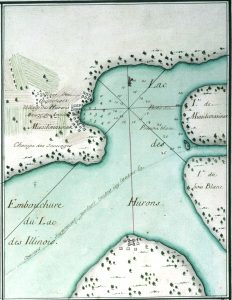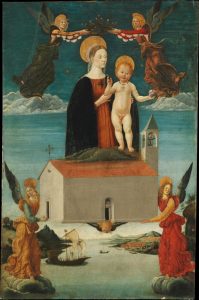In the midst of the holiday season, and with Christmas upon us, let’s take a look at one of the earliest recorded Christmas celebrations in the Straits of Mackinac.

During the winter of 1679, Fr. Jean Enjalran supervised the Jesuit mission of St Ignace. Originally intended to serve a group of refugee Huron people brought to Mackinac by Fr. Jacques Marquette, the mission also served converts among the local Odawa. Combined with ministering to a French trading settlement that sprang up soon after the mission’s founding in 1671, Fr. Enjalran spent much of his time preaching to Native converts and instructing them in the Catholic faith. There were so many Odawa people living near the St. Ignace mission that the Jesuits eventually set up a smaller church, dedicated to St. Francis de Borgia, to specifically minister in their communities.

During the Christmas season, Fr. Enjalran supervised an elaborate series of services, processions, and feasts to mark the birth of Christ. In preparation, the Huron converts built a grotto in the mission church, complete with a cradle and a statue of the infant Jesus. After Fr. Enjalran conducted a midnight mass on Christmas, the Hurons and some of the Odawa asked that the priest bring the statue to their villages. Instead of simply moving the statue, the Hurons planned an elaborate procession for Epiphany, recreating the visit of the Magi to the infant Christ. The Hurons, including those who were not converts, split into three large groups, each with a tribal leader wearing a crown and carrying a scepter to represent the three kings and accompanied by the sounds of trumpets. Proceeded by a banner carried on standard depicting a star on a sky-blue field, the three groups marched to the church, where they presented gifts to at the grotto and prayed. Fr. Enjalran then wrapped the statue in a fine linen cloth, and followed the procession, this time led by two Frenchmen carrying a banner depicting Mary and Jesus, to the Huron village. Once there, all of the Hurons, including those who had not converted to Christianity, participated in a dance and feast. A week later Fr. Enjalran supervised a similar procession, with the Huron this time visiting the Odawa community for another feast. A complete description of these rituals can be found in the Jesuit Relations of 1679, vol. 61.
We hope that you enjoy this festive season. From all of us at Mackinac State Historic Parks, happy holidays!









